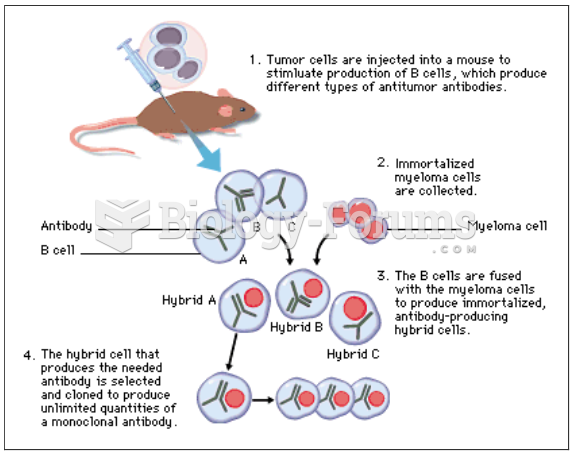Answer to Question 1
Correct Answer: 1,2,3
Rationale 1: Tobacco is considered a chemical carcinogen.
Rationale 2: Alcohol is considered a chemical carcinogen.
Rationale 3: Asbestos is considered a chemical carcinogen.
Rationale 4: Ultraviolet light is considered a physical carcinogen.
Rationale 5: HPV is a viral carcinogen.
Global Rationale: Many chemical carcinogens have been identified. For example, chemicals in tobacco smoke are responsible for about one third of all cancers in the United States. Alcohol ingestion has also been linked to certain cancers, including esophageal, oral, breast, and liver cancers. Chemicals such as asbestos and benzene have been associated with a higher incidence of cancer in the workplace
Answer to Question 2
Correct Answer: 1
Rationale 1: Alcoholism and a high-fat diet are lifestyle factors that put this client at risk for developing cancer.
Rationale 2: Monthly breast self-exam is ideal, but routine mammograms offset the risk from forgetting to do some monthly exams.
Rationale 3: Being 10 pounds overweight is probably not a risk, and exercising regularly will offset the weight gain.
Rationale 4: Application of sunscreen at the beach helps prevent skin cancer.
Global Rationale: Alcoholism and a high-fat diet are lifestyle factors that put this client at risk for developing cancer. Monthly breast self-exam is ideal, but routine mammograms offset the risk from forgetting to do some monthly exams. Being 10 pounds overweight is probably not a risk, and exercising regularly will offset the weight gain. Application of sunscreen at the beach helps prevent skin cancer.







